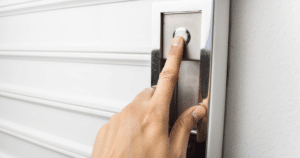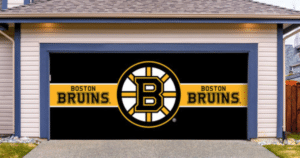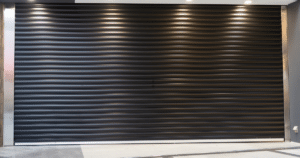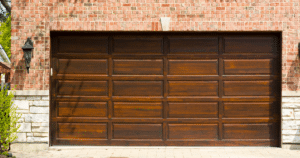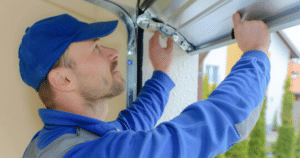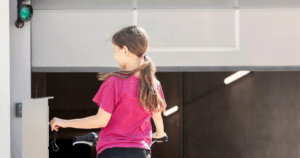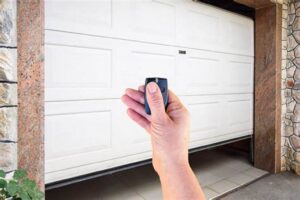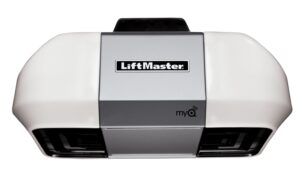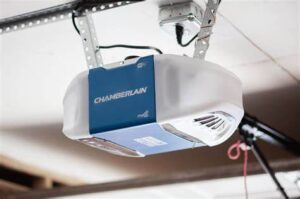As a homeowner, you understand the significance of maintaining a secure and energy-efficient living space. One crucial component that often goes overlooked is the garage door bottom seal. This unassuming strip of material plays a vital role in protecting your home from unwanted intruders, drafts, and energy loss. This comprehensive guide explores garage door seals, their importance, types, selection criteria, installation process, maintenance tips, and joint issues.
Garage door bottom seals act as a barrier between the bottom edge of your garage door and the floor, creating a tight seal that prevents air infiltration and potential security breaches. By ensuring a proper seal, you not only enhance the overall security of your home but also contribute to energy conservation by minimizing heat loss or gain through the garage door opening.
The role of garage door bottom seals in security
In today’s world, home security is a paramount concern. Your garage door is often an entry point for potential intruders, making it crucial to have a reliable garage door bottom seal. A well-fitted seal effectively blocks gaps or openings, deterring unwanted visitors from gaining access to your property. Even the smallest gap can be exploited, so a sturdy and properly installed bottom seal acts as an additional layer of protection, providing you with peace of mind.
Moreover, a secure bottom seal can also safeguard your home from pests and rodents seeking entry. These unwelcome visitors can cause damage, contaminate your living space, and pose health risks. By sealing off potential entry points, you create a formidable barrier against these unwanted guests, ensuring a safer and more hygienic environment for you and your family.
Types of garage door bottom seals
Garage door bottom seals come in various materials and designs, each offering unique advantages. Here are some common types:
- Rubber seal
These flexible and durable seals are made from synthetic or natural rubber. They are known for their ability to conform to uneven surfaces and provide excellent insulation against drafts and moisture.
- Vinyl seals
Vinyl seals are cost-effective and offer decent weather resistance and insulation properties. They are available in various colors to complement the aesthetics of your garage door.
- Brush seals
Brush seals, consisting of dense bristles or nylon filaments, create a sweeping motion against the floor, effectively sealing gaps and preventing debris from entering.
- Aluminum seals
These heavy-duty seals are crafted from aluminum, making them highly durable and resistant to wear and tear. They are often used in commercial or industrial settings requiring high traffic and heavy-duty performance.
- Combination seals
As the name suggests, combination seals incorporate multiple materials, such as rubber and aluminum, to provide a robust and versatile sealing solution.
Choosing the right garage door bottom seal for your needs
Selecting the appropriate garage door bottom seal depends on several factors, including your climate, garage door type, and budget. Here are some considerations to keep in mind:
- Climate: If you live in an area with extreme temperatures or high humidity, you’ll want to choose a seal that can withstand those conditions without cracking, warping, or deteriorating.
- Garage door material: The material of your garage door, whether it’s wood, steel, or aluminum, can influence the type of seal that works best. Some seals are designed specifically for certain door materials.
- Insulation needs: If energy efficiency is a top priority, opt for seals with superior insulation properties to minimize heat transfer and reduce energy costs.
- Budget: Garage door bottom seals can vary in price, with higher-end options often offering better durability and performance. Determine your budget and prioritize the features that matter most to you.
Installation process of garage door bottom seals
Proper installation is crucial for ensuring the effectiveness of your garage door bottom seal. While the process may vary slightly depending on the type of seal and your garage door, here are the general steps:
- Preparation: Clean the area where the seal will be installed, ensuring it is free of debris, dirt, and any existing weatherstripping or seals.
- Measuring: Accurately measure the width of your garage door to ensure you purchase the correct seal length. It’s better to have a slightly longer seal than a shorter one, as you can trim the excess.
- Cutting (if necessary): Use a sharp utility knife or scissors to make a clean, straight cut if your seal needs to be cut to size.
- Application of adhesive: Many seals come with an adhesive backing or require the application of a separate adhesive. Follow the manufacturer’s instructions carefully for proper adhesion.
- Installation: Starting from one end, carefully press the seal into place, ensuring it adheres evenly and securely to the garage door surface.
- Trimming and finishing touches: Trim any excess material once the seal is in place for a clean, finished look.
- Testing: Open and close your garage door a few times to ensure the seal functions correctly and creates a tight seal against the floor.
Maintenance and care tips for garage door bottom seals
Regular maintenance is essential to prolong the lifespan and effectiveness of your bottom seal. Here are some tips to keep your seal in top condition:
- Regular cleaning: Periodically clean the seal with a mild detergent and water solution to remove dirt, debris, and any buildup that could affect its performance.
- Inspection: Inspect the seal regularly for signs of wear, cracks, or damage. Address any issues promptly to prevent further deterioration.
- Lubrication: If your garage door bottom seal has moving parts, such as hinges or rollers, lubricate them according to the manufacturer’s recommendations to ensure smooth operation.
- Replacement: Even with proper care, seals will eventually wear out and must be replaced. Monitor the condition of your seal and replace it when necessary to maintain optimal performance.
Common problems with garage door bottom seals and how to fix them
While garage door seals are designed to be durable and long-lasting, they can sometimes encounter issues. Here are some common problems and their potential solutions:
- Gaps or cracks: If you notice gaps or cracks in your seal, it may be due to age, excessive wear, or improper installation. Sometimes, you can patch or repair small gaps with a compatible sealant. However, replacing the entire seal for more significant gaps or extensive damage is best.
- Sticking or binding: If your garage door bottom seal is sticking or binding, it could be due to debris buildup, lack of lubrication, or misalignment. Clean the area thoroughly, lubricate any moving parts, and check for proper alignment. If the issue persists, you may need to adjust or replace the seal.
- Moisture or drafts: If you’re experiencing moisture or drafts despite having a bottom seal installed, it could be due to improper sealing or a damaged seal. Inspect the seal for any gaps or cracks and ensure it’s making complete contact with the floor. If necessary, replace the seal with a new, high-quality option.
- Noise or vibration: A noisy or vibrating garage door bottom seal could be caused by loose hardware, misalignment, or a worn-out seal. Tighten any loose components, check for proper alignment, and consider a garage door repair if the seal is excessively worn.
FAQs
What is the best way to seal the bottom of a garage door?
The best way to seal the bottom of a garage door is to install a high-quality rubber or vinyl weather seal that fits snugly against the floor. Ensure the seal is aligned and secured to prevent drafts, pests, and water intrusion.
What is the bottom seal on a garage door called?
The bottom seal on a garage door is called a weather seal or threshold seal. This seal helps prevent air, water, and debris from entering the garage under the door.
Can the rubber seal at the bottom of a garage door be replaced?
The rubber seal at the bottom of a garage door can be replaced. Simply remove the old seal, clean the surface, and install a new weather seal that fits your garage door model.
How do I fill the gap between my garage door and floor?
Install a new weather seal or threshold seal to fill the gap between your garage door and the floor. Additionally, you can use a garage door floor seal to even out the floor and create a tighter seal.
What is the difference between vinyl and rubber garage door bottom seals?
Vinyl garage door bottom seals are more rigid and durable, making them suitable for extreme weather conditions, while rubber seals are more flexible and provide a tighter seal. Both materials offer good protection, but the choice depends on your needs and climate.
Conclusion
The importance of a garage door bottom seal cannot be overstated. At Team Taylor Doors, we understand that this seemingly simple component plays a crucial role in maintaining your home’s security, energy efficiency, and overall comfort. Investing in a high-quality bottom seal can effectively prevent drafts, pests, and potential intruders from entering your garage, ensuring a safe and energy-efficient environment.
Our comprehensive guide has highlighted the different types of garage door bottom seals, their selection criteria, and the installation process, making choosing the right seal for your needs easier. Proper installation and regular garage door seal maintenance are essential to ensuring its longevity and effectiveness. By addressing common issues and following the maintenance tips provided, you can keep your garage door bottom seal in optimal condition, contributing to your home’s overall efficiency.
At Team Taylor Doors, we are committed to providing top-notch products and exceptional service. Whether you need assistance selecting the proper bottom seal, professional installation, or expert maintenance advice, our team is here to help. Trust us to enhance your home’s security and energy efficiency with our high-quality new garage door solutions. Contact us today to learn more about how we can assist you in maintaining a secure and comfortable living space.
If you’re unsure about the condition of your garage door seal or need assistance with installation, contact Team Taylor Doors today. We’re here to provide expert advice and professional garage door repair in Kansas City to ensure your home stays safe, secure, and energy-efficient. Don’t wait—reach out to us now!
End Note
Thank you for reading our guide on the importance of a garage door seal. At Team Taylor Doors, we are dedicated to helping you maintain a secure and energy-efficient home with our top-quality garage door products and services. For more information about our comprehensive range of offerings, please visit our Products page.
If you’re experiencing issues with your garage door or need professional assistance, check out our Service & Repairs section. We provide expert repairs and maintenance to ensure your garage door operates smoothly and safely. Additionally, we offer flexible Financing options to make investing in the best solutions for your home more accessible.
Stay informed with the latest tips, news, and updates by visiting our Blog for visual inspiration and examples of our work. Our service areas are extensive; you can find detailed information on our Service Areas page.
Connect with us on social media to stay updated and engaged. Follow us on Facebook, LinkedIn, Instagram, Twitter, YouTube, and Pinterest. Team Taylor Doors is committed to providing exceptional service and the highest quality products to keep your home secure and efficient. Contact us today to learn more about how we can help you with all your garage door needs.

